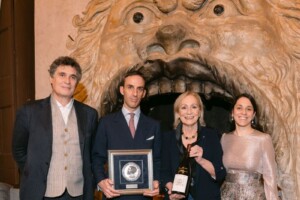The Minister of Agriculture, Paolo De Castro recently stated that, “A great conquest has been made by Italian researchers, in collaboration with French researchers, in the field of plant biology, with the first detailed analysis of the grapevine’s DNA has been published in the scientific magazine ‘Nature’”.
The efforts of researchers from various Italian universities, together with the National Interuniversity Consortium for the Molecular Biology of Plants, the Institute of Applied Genomics (IGA), researchers from the national French center for gene sequencing (Génoscope) and from the Institut National de la Recherche Agronomique (INRA) in France have produced the first quality “sketch” of the gene sequence of the Vitis vinifera, the first mapping of a fruit species, which is cultivated for both fresh and transformed consumption. The results of these studies contribute significantly to the understanding of the evolution of the plant and the genes that produce the aromatic characteristics of wine.
“This knowledge” – stated Minister De Castro – “can be used in applied projects geared towards developing grapes that are resistant to diseases, contributing to agricultural practices that are compatible with the environment and reducing the use of chemicals.”
However, the Vice President of the Italian Foundation for Genetic Rights, Roberto Conti, asks an important question in regards to the DNA research that has been completed by these Italian and French researchers in a project that has been financed by both governments (and whose results are now available for public scrutiny). “What will political powers do? We should exclude from the start that someone could even think of making genetic modifications to the grape. A political leader from Greenland can think about this but certainly not in our country, a producer of excellent wine.”
Coldiretti’s Position:
“The DNA sequencing of grapevines used to guarantee the identity of the territories.”
In regards to the recent scientific breakthrough, Coldiretti confirms that knowing the genome sequence of grapevines represents a great opportunity if it is used to valorize the territorial identity of grapevines and to protect them from attempts at genetic modification that favor standardization and localization, which damage both producers and consumers.
The results of the study should offer an important contribution to the safeguarding of the connection with the specific territory of a variety and in defending it from the risk of OGM contamination as well as supporting a more decisive battle against fraud. For quality Italian wines, there is no space for biotechnology, neither in the vineyards nor in the winery, nor on the tables of consumers. It is necessary not to compromise the chosen model of development after the methanol crisis, which has been successful and a lesson for the entire food and agriculture system by founding its success on quality, the link to territory, and the transparency in relation to consumers.
A successful path – concluded Coldiretti – that has led Italy to become the top world exporters of wine with a value of 3.2 billion euros, contributing to a sector that now earns over 9 billion euros. The wine sector today is testimony to a successful regenerative process realized by a system of enterprises that, after a long process for the valorization of quality, also successfully reached the goal of offering its entire grape variety patrimony, its endogenetic wealth, its climate, landscapes, artistic and natural patrimonies in a glass of wine. A goal that should continue to be aimed for in scientific studies as well.
Copyright © 2000/2025
Contatti: info@winenews.it
Seguici anche su Twitter: @WineNewsIt
Seguici anche su Facebook: @winenewsit
Questo articolo è tratto dall'archivio di WineNews - Tutti i diritti riservati - Copyright © 2000/2025








































































































































































































